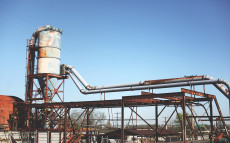- pathfindersAI
- Job Profile
Timing Device Assemblers and Adjusters
Summary
Timing Device Assemblers and Adjusters: A Comprehensive Guide
What They Do
Timing Device Assemblers and Adjusters play a crucial role in the intricate world of timekeeping and precision instrumentation. These professionals are responsible for building and fine-tuning timing devices such as clocks, watches, and chronometers. Their work ensures that these devices function accurately, adhering to strict standards of time measurement. This profession is vital in both consumer markets and industrial applications, ranging from everyday wristwatches to sophisticated devices used in scientific research and aviation.
Job Responsibilities
The responsibilities of Timing Device Assemblers and Adjusters are multifaceted, requiring a blend of technical expertise and meticulous attention to detail. Their tasks include assembling and installing various parts of timing devices, such as gears, springs, and electronic components. They meticulously adjust and calibrate these components to ensure precise timekeeping. Additionally, they conduct tests to confirm accuracy, diagnose malfunctions, and make necessary repairs or adjustments. Documentation of their work and adherence to quality control guidelines are also critical parts of their job to maintain the high standards of precision required in the industry.
Essential Skills
Success in this profession depends on a unique set of skills. A strong foundation in mechanical aptitude is essential, as is the ability to read and interpret technical blueprints and diagrams. Fine motor skills and hand-eye coordination are crucial, as the work often involves handling small, delicate components. Problem-solving skills are also vital for diagnosing issues and implementing effective solutions. Furthermore, a keen eye for detail and a high level of patience are necessary for performing the meticulous adjustments required to maintain accuracy in timing devices. Familiarity with electronic testing equipment and basic computer skills are increasingly important in modern assembly and adjustment processes.
Educational Pathways
To embark on a career as a Timing Device Assembler and Adjuster, a high school diploma or equivalent is typically the minimum educational requirement. However, specialized training is often necessary to gain the specific skills and knowledge required for the job. Many vocational schools and community colleges offer relevant programs in watchmaking or precision instrument technology. Apprenticeships and on-the-job training provide practical experience and further enhance technical abilities. Certifications from professional organizations, such as the American Watchmakers-Clockmakers Institute (AWCI), can also improve job prospects and demonstrate a commitment to the field.
Career Prospects
The timing device industry offers a range of opportunities for skilled assemblers and adjusters. While traditional watchmaking has faced challenges due to the rise of digital technologies, niche markets and luxury brands still demand high-quality mechanical timepieces. Furthermore, skills in precision assembly and adjustment are transferable to other fields, such as aerospace, medical devices, and scientific instrumentation. The median annual salary for this profession varies depending on experience, location, and industry, but the demand for precision and expertise ensures a stable career outlook for dedicated professionals.
Conclusion
In conclusion, Timing Device Assemblers and Adjusters hold a vital position in the world of timekeeping and precision engineering. Their intricate work guarantees the accuracy and reliability of various timing devices essential in both everyday life and specialized fields. With appropriate education and training, coupled with essential skills and attention to detail, individuals can build rewarding careers in this specialized industry. As technological advancements continue to evolve, the role of Timing Device Assemblers and Adjusters will remain crucial, preserving the tradition of precision craftsmanship and innovation.
Video
Compensation
Similar Occupations
In this area you will find other occupations that are close to the one you were viewing in tasks, knowledge and work environment. If the primary job profile you are viewing isn't quite to your liking, take a look around and see what else is available.
Basic and Premium Accounts have more alternative occupations available than the Free account.

Grinding and Polishing Workers, Hand - 51-9022.00
Grinding and Polishing Workers, Hand use hand tools or handheld power tools to grind, sand, and polish metal, wood, stone, clay, plastic, or glass objects to achieve a smooth or specified finish. They inspect workpieces for defects, ensure surface quality, and may apply protective or decorative coatings as needed.
-
$38,940/yr
Median Pay -
12,290
Number of Jobs

Multiple Machine Tool Setters, Operators, and Tenders, Metal and Plastic - 51-4081.00
Multiple Machine Tool Setters, Operators, and Tenders, Metal and Plastic, set up, operate, or tend more than one type of cutting or forming machine tool or robot. They ensure that components are manufactured to precise specifications, often adjusting settings and performing quality checks throughout the production process.
-
$41,600/yr
Median Pay -
127,790
Number of Jobs